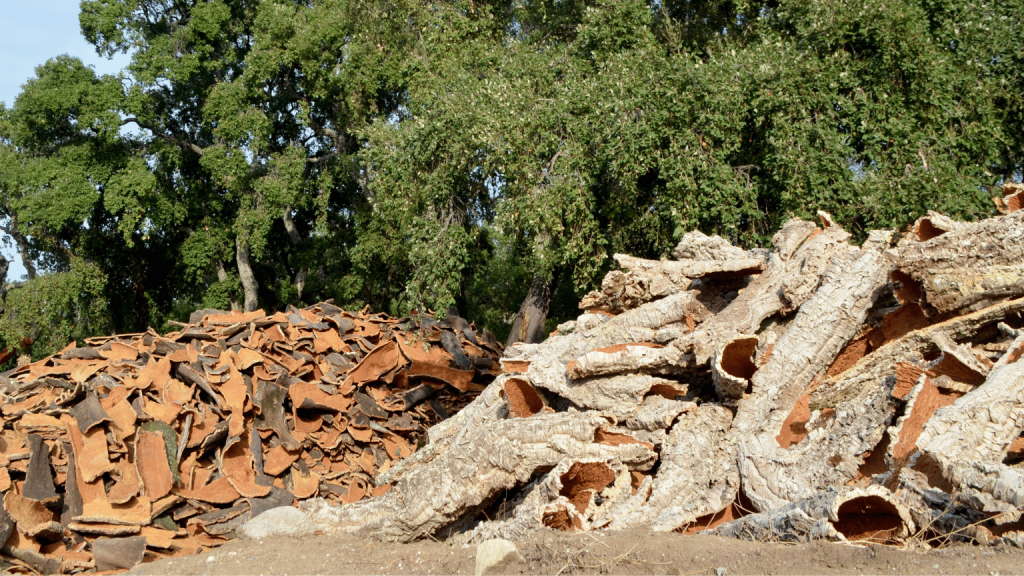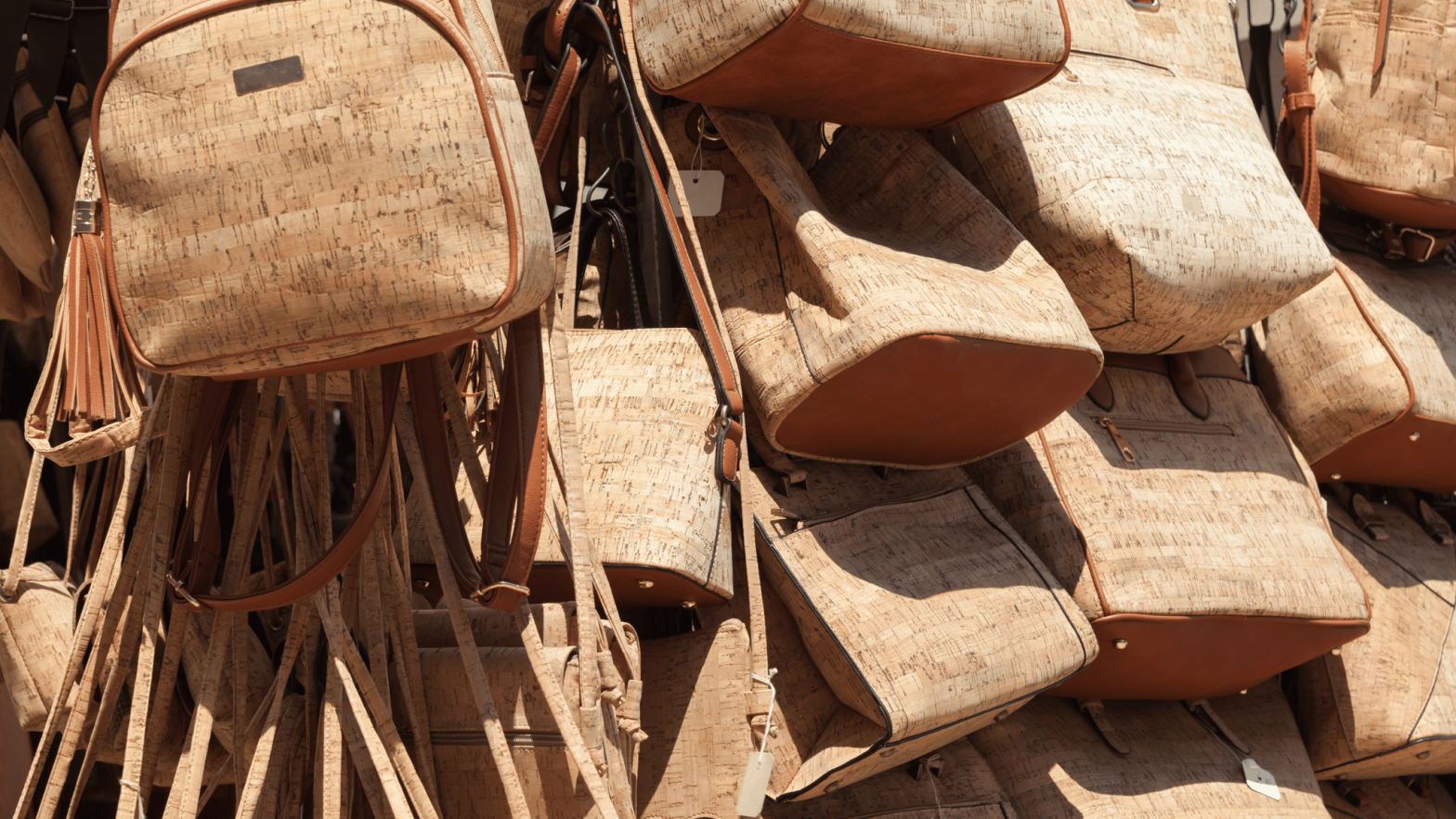A bag’s material does so much more than influence its appearance. This prominent design foundation also impacts a bag’s quality, durability, hand feel, and overall end-use. Any talented bag manufacturer will understand the significance of diligent research when it comes to selecting the right fabric. Cork will be your fabric if you’re seeking a natural material that seamlessly blends sustainability with strength. In this comprehensive guide, we will be sharing all the essential information you need to know about using cork in bag manufacturing so that you can decide if it’s right for you.
What Is Cork?
Cork is a natural material derived from the bark of the cork oak tree (Quercus suber). This variety primarily grows in the Mediterranean region. Cork production is commonly associated with countries like Portugal, Spain, and Italy but it can also be found in France, Morocco, Tunisia, and Algeria.
Cork has been used across the globe for centuries, with its origins tracing back thousands of years. It remains a versatile material to this day, used in various industries including bag manufacturing, wine production, and interior design.
The Advantages Of Using Cork In Bag Manufacturing
Sustainability & Eco-friendliness. Cork earns high regard as an eco-friendly material. It is a favored choice for sustainable brands all over the world. The extraction of cork involves removing the bark from the cork oak tree, which then regenerates to create a renewable resource. This natural process does not harm the tree, which can live for over 200 years. Cork forests also contribute to biodiversity preservation and act as carbon sinks, absorbing CO2 from the atmosphere.
Strength & Durability. Despite its lightweight nature, cork fabric exhibits impressive strength and durability. Cork bags have a reputation for withstanding everyday use and retaining their structural integrity for many years. The inherent resilience of cork makes it an excellent choice for bags that need to endure heavy loads or frequent travel, such as backpacks and duffles.
Aesthetics & Texture. Cork fabric boasts a unique natural texture that adds a distinctive appeal to bag designs. Its grain patterns, rich earthy tones, and subtle variations make each piece of cork fabric truly one-of-a-kind.
Water Resistance. Cork is naturally resistant to moisture and water penetration; after all, it can contain liquids such as wine for decades without any leakage. As an exceptional choice for bags exposed to wet or humid environments, cork provides reliable protection against water damage, ensuring the safety of its contents.
Thermal Insulation. Cork fabric offers excellent thermal insulation properties. It acts as a natural barrier against temperature changes, helping keep the bag’s contents stable. Bags made from cork offer a particular advantage for carrying items that require insulation or temperature control, such as food, beverages, or electronic devices. This feature proves highly beneficial in ensuring the desired temperature and protection for these items.
Hypoallergenic & Anti-microbial. Cork is naturally hypoallergenic. It is an ideal option for individuals with allergies or sensitivities, as it repels dust, pollen, and other common allergens. Moreover, Cork has antimicrobial properties that prevent the growth of bacteria, mold, and mildew. These qualities contribute to a cleaner and healthier environment for both the bag and its user.
Versatility & Flexibility. Crafting cork fabric into various bag styles and shapes is a breeze, thanks to its ease of manipulation. Cork fabric lends itself to molding, cutting, stitching, and engraving, opening up boundless possibilities in bag manufacturing. Whether you’re aiming for a classic, minimalist look or a bold and artistic design, cork provides the flexibility to bring your creative visions to life.
The Limitations of Using Cork in Bag Manufacturing
Limited Color Options. Natural cork fabric typically comes in earthy tones such as brown, tan, and beige. It may not be the right choice for you if you want to create designs with vibrant or neon colors. You don’t necessarily have to stick to neutrals though; cork can be dyed using eco-friendly pigments and stains.
Texture Variations. Cork may exhibit slight variations in texture and appearance as a natural material. While many believe these variations give cork a unique charm, they can cause issues with quality control. Bag manufacturers can strive towards consistency by sourcing cork fabric from reputable suppliers, and carefully selecting samples with their desired texture.
Cork Production & Manufacturing Considerations

Cork’s extraction involves carefully removing bark from trees without harming the tree. Skilled workers with training in removal techniques should handle the process. After harvesting, the bark undergoes a series of steps including drying, boiling, and flattening. This prepares it to be transformed into thin cork sheets or combined with fabric backings, providing enhanced strength and flexibility.
The fabric allows for easy cutting, sewing, and assembly using standard sewing machines and techniques. Due to the unique texture and characteristics of cork, it is advisable to use specialized sewing equipment to achieve durable and secure seams in bag construction.
Cork Sustainability & Environmental Impact
Cork is one of the most environmentally-friendly materials on the market and is a popular choice for any brand that wants to practice sustainable design and manufacturing.
It is a natural and renewable resource. The harvesting process of cork does not harm the trees it is sourced from, which continue to grow and produce more cork over time. Cork oak forests play a vital role in preserving biodiversity, preventing desertification, and reducing carbon dioxide levels.
In terms of manufacturing, cork production involves minimal energy consumption and does not release harmful pollutants into the environment. It is fully biodegradable and naturally decomposes without leaving behind harmful residues.
Bag manufacturers should always source their fabric from suppliers who adhere to sustainable practices, maintain high-quality standards, and engage in responsible harvesting methods to support the preservation of cork oak forests.
Conclusion
To maximize the sustainability of cork bags, manufacturers can embrace even more eco-friendly practices. In fact, using water-based adhesives, non-toxic dyes, and recycled materials for additional design components will further reduce the environmental impact of bag production. With its eco-friendly attributes and organic charm, cork is an exceptional choice for bag manufacturers looking to create sustainable, durable, and stylish designs. The natural versatility of the fabric makes it an excellent alternative to traditional materials. By incorporating cork into your bag designs, you can not only contribute to a more sustainable fashion industry but also offer customers a truly one-of-a-kind accessory.
